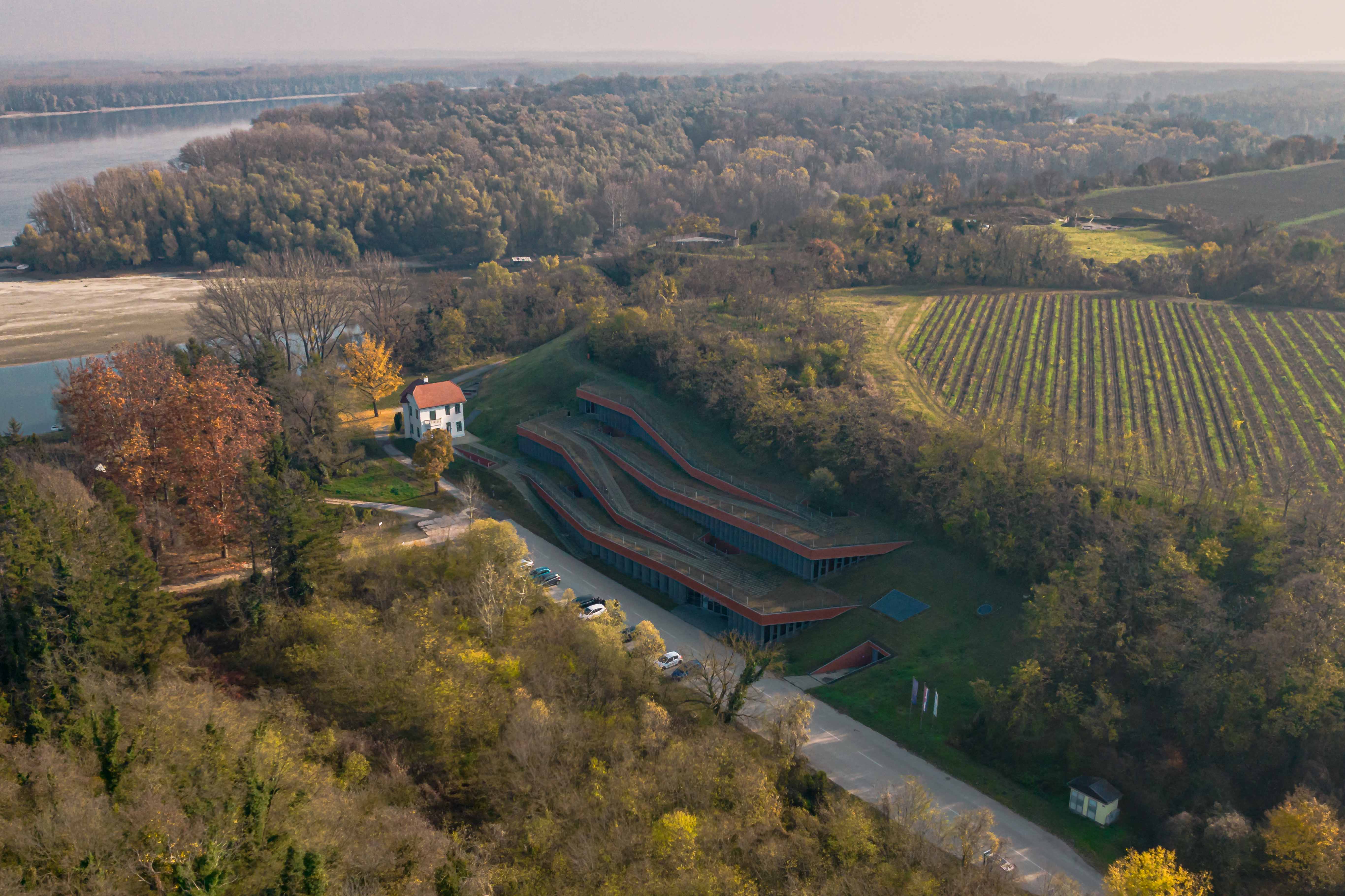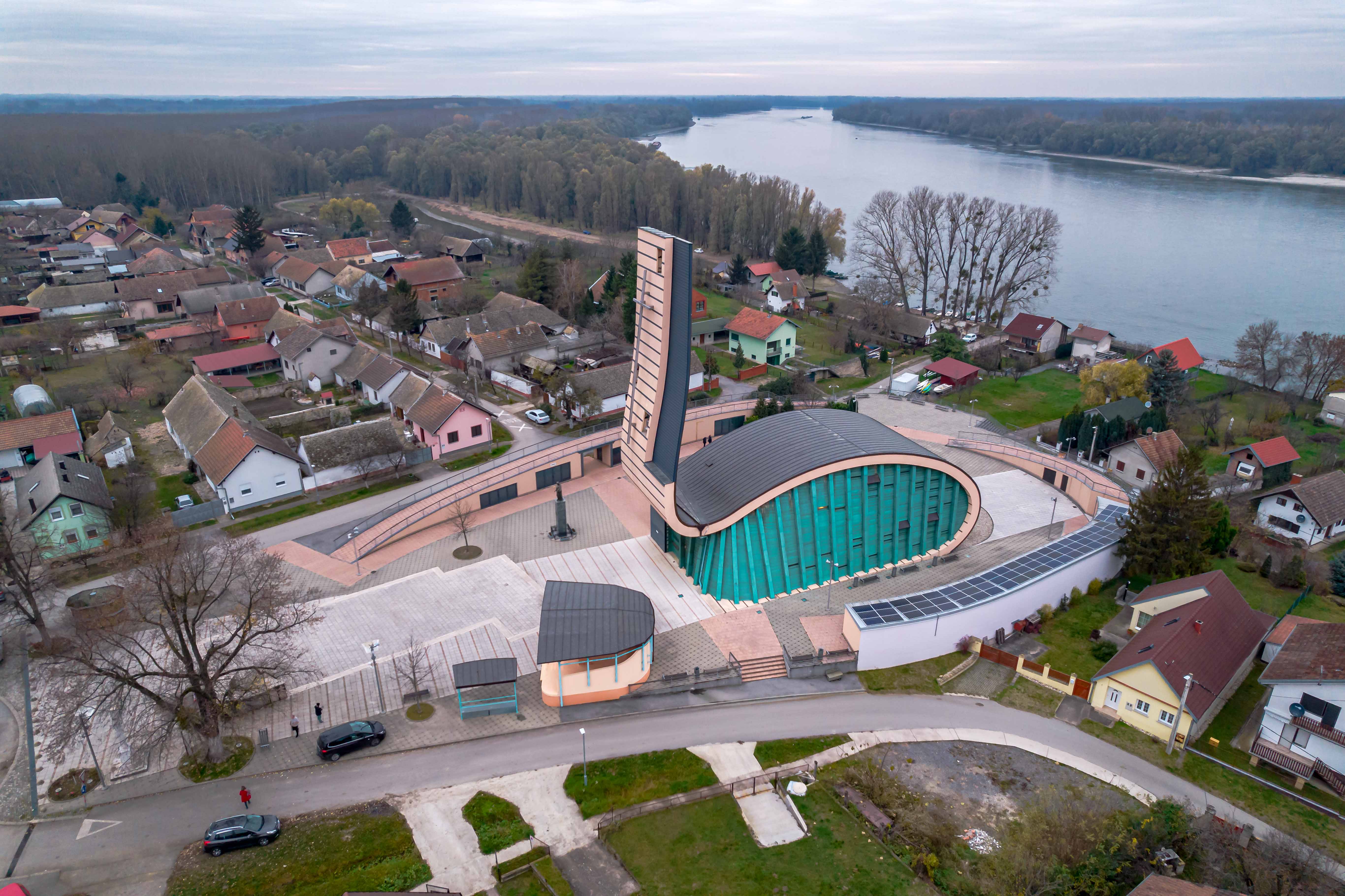Discover the Croatian Danube: SOM (Catfish) on Our Way to Šarengrad
December 3, 2022 – Having passed through Vukovar, the Croatian Danube continues its journey east toward Ilok. We reach the slopes of Fruška Gora, which is positioned just above the picturesque little villages, helping the river frame them.
When my family moved back to Vukovar in 1999, there was not a lot to do. Shops and playrooms weren’t really a thing, and my brother and I (4 and 6) spent most of our time outside. Hanging around the Danube in the summer, making snowmen in the winter. Year after year.
From time to time, we would get into the car to go on a family field trip. These special occasions were filled with laughter and excitement because the road would always surprise us anew. My dad would speed up on the little hills, making us feel like we were riding a rollercoaster and there was something to learn between them. We saw our first hazelnut trees, learned the difference between apple and pear trees, and we could even tell apart different kinds of crops. And the grapevines were always so much fun to look at. They stretched so far and wide that it felt like we were racing them.

The road follows the course of the Danube, and it leads to Šarengrad. That’s where the Danube kisses the sky, as sung by Josipa Lisac. And between Vukovar and Šarengrad came our first fish – som (Croatian for catfish). SOM stood for Sotin, Opatovac, and Mohovo, and it was a mnemonic taught to my mom by her father, who spent all his free time fishing in the Danube. To make sure that you get the villages in the correct order. When I was six, I thought it was the coolest wordplay ever; then, I thought it was kinda lame; now I’m sure that I’ll take my kids on the same road trip and teach them the same trick. In the newest edition of our Croatian Danube series, we will discover Sotin, Opatovac, Mohovo (som), and Šarengrad.
Sotin
- Sotin is a tiny village adjacent to Vukovar, with a population of about 700. Sadly, during the homeland war, as much as 10% of Sotin’s population was either killed or taken away, and many have not yet been found. That is why the first thing that you see in Sotin will be a monument dedicated to those people and their sacrifice. And though the village is relatively small, its location right next to Vukovar and on the crossroads of some other villages from the direction of Ilok makes it a convenient stop for refreshments.
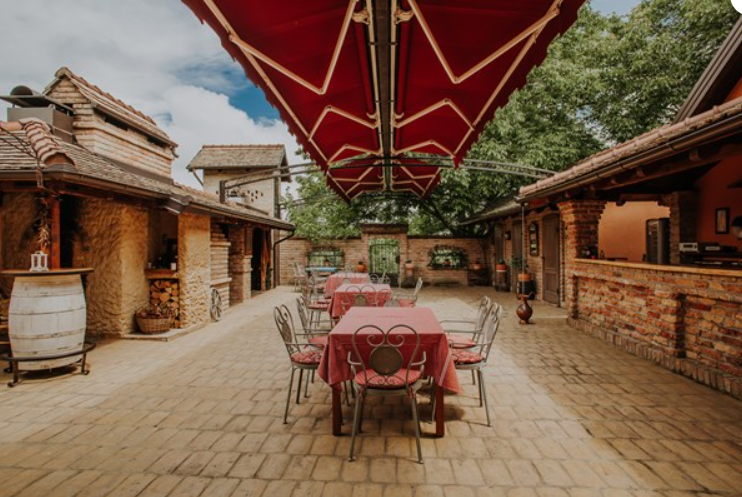
Vukovar Tourist Board
If you’re looking to have a drink or a bite of delicious local dishes, make a stop in Gondola Sotin. Gondola is a family run picnic ground and restaurant, with a few rooms available as well. The whole place is decorated with traditional patterns of Syrmia, telling the story of this beautiful area. In addition to daily operations, they host events, celebrations, and more, so it could be a good choice for a team building as well.
Opatovac
In Opatovac there’s a church, a small shop, a lake, and an internationally successful ping-pongng team. This even smaller village counts roughly three hundred people these days. Its residents will tell you there’s nothing to do, yet they spend most of their time hanging out in their little village. The first written recordings of its existence date as far back as 1387, when it was the home to a monastery. The reason why people settled there was its rich soil, which to this day remains one of the most fruitful areas in all of Europe.
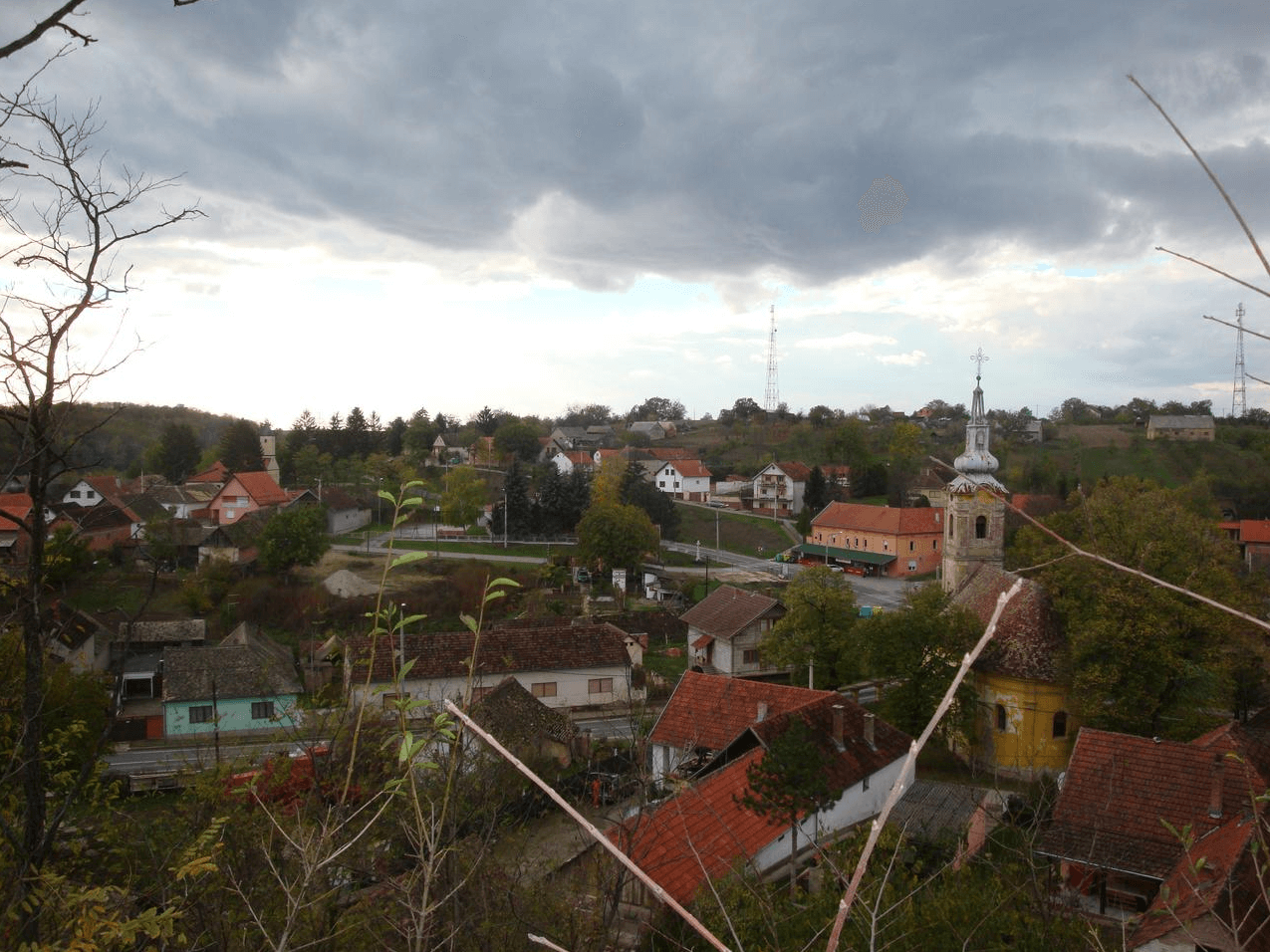
Lovas Municipality
Opatovac is the ideal place to rest, recharge, and wander around in nature. The most appreciated location in the village, especially if you visit in the summer, is undoubtedly the Opatovac Ada. On this river island, all locals and some visitors like to go swimming, camping, or just chilling in the shade. The volleyball tournaments that happen here are an experience in themselves. We would like to thank Andrija Pole for the pleasant conversation about his home village.

Mohovo
Welcome to the Mammoth Valley! Similar to Opatovac in size, Mohovo hides own little secrets. Though it only has about three hundred residents, they do know how to come together and show off their piece of paradise to the world. Thanks to Goran Popović and the association Dolina Mamuta (Mammoth Valley), the village is well on its way to becoming known as an epic place where remains of prehistoric animals can be found. So far, multiple mammoth teth and rhinoceros remains have been found right there.
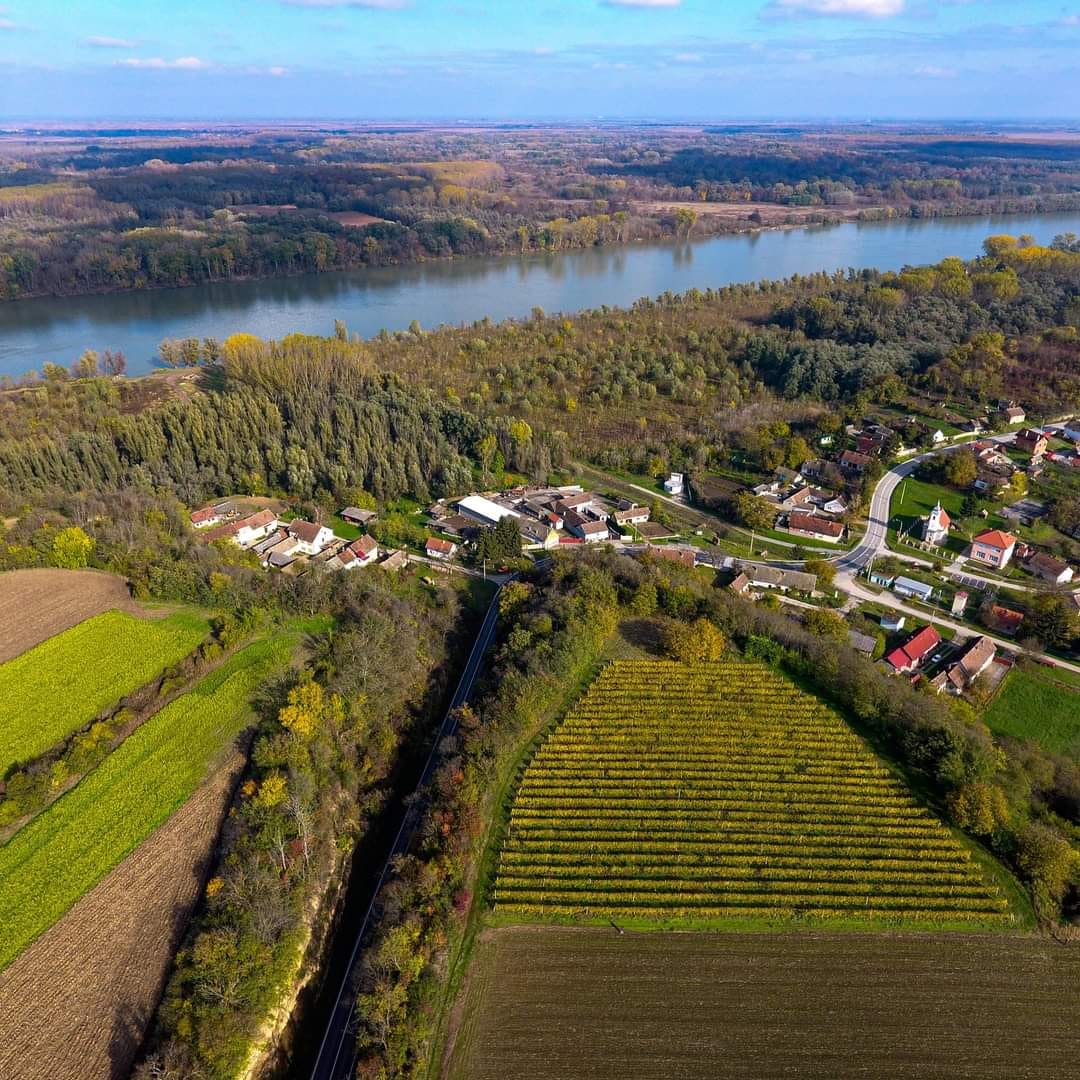
Udruga Dolina Mamuta FB
So far, the association has ensured that the remains were arranged into an exhibition, hosted two Mammothfests, and has put up educational materials around the valley for all visitors to learn along. In addition to promoting their history, the association regularly organises events for the village residents, like Fišijada (fish stew cook-off), the upcoming Christmas market, and more. Mohovo is the perfect little place to feel the spirit of community.

Udruga Dolina Mamuta FB
Šarengrad
Last, but not least, we have arrived in Šarengrad. The arrival there feels like you’re entering a fairytale -you are high on a hill, you can see the remains of a fortress on your left, a little settlement on your right, and the Danube framing it just below. Oh, and there’s a giant sign saying “Gdje Dunav ljubi nebo” (Where the Danube kisses the sky). And you know that it’s right here as soon as you see it.
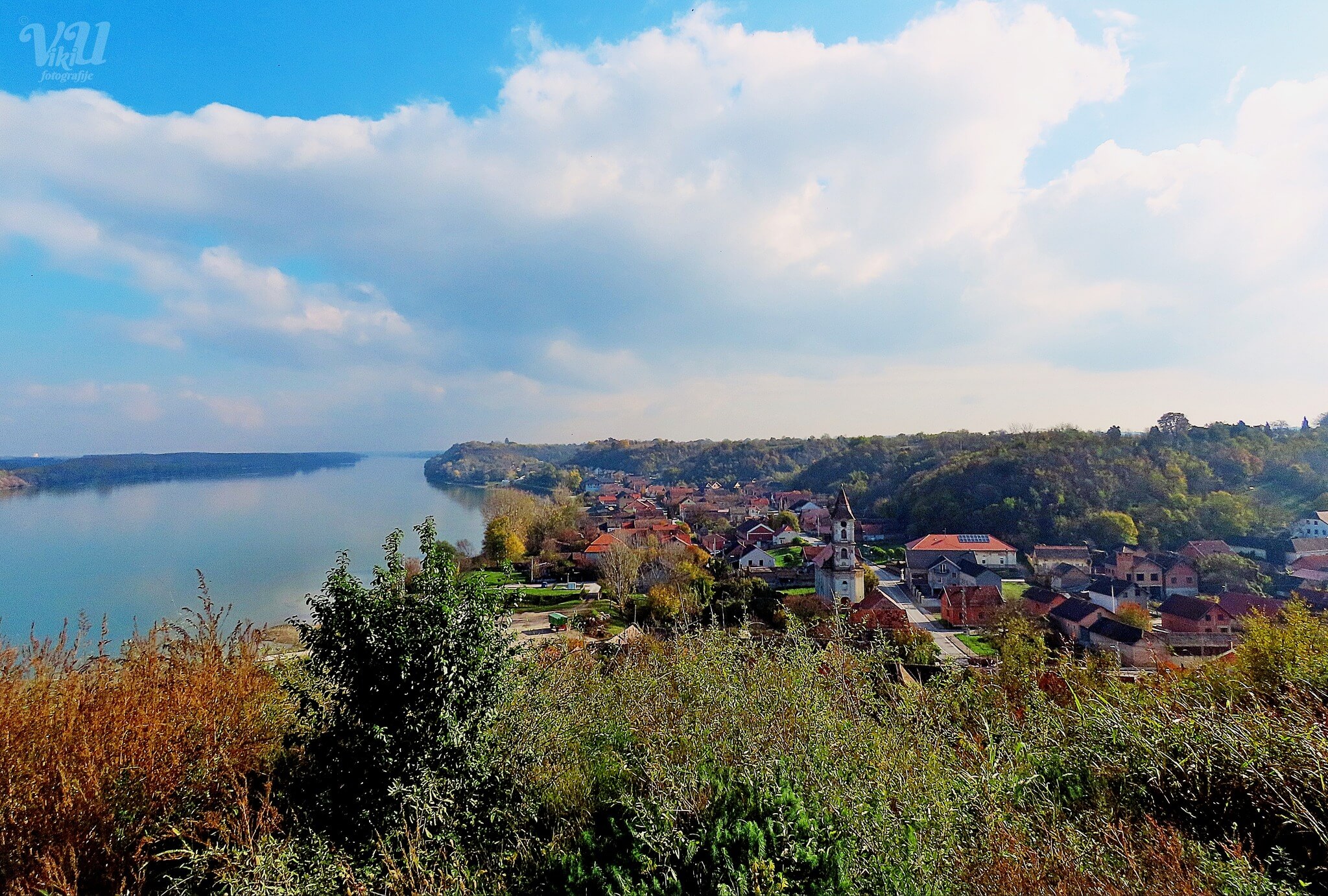 Violeta Kovačević - Viki Vu Fotografije
Violeta Kovačević - Viki Vu Fotografije
That is the perfect description of Šarengrad. The remains of the fortress date back to the 15th century, and there was info that the village might even date back to the 11th century. The village is slightly bigger than its neighbours, with some eight hundred residents, but it is still on its path of recovery. There might not be much to do there, but a day of exploring the fortress and hiking the bank of the river in perfect peace is all the escape that one might need. And though Šarengrad does not mean the colourful city like we thought when we were kids (in Croatian šaren = colourful), but is just a Hungarian word for Syrmia, the colours of Šarengrad in the spring or in autumn will leave you speechless. That’s a promise.
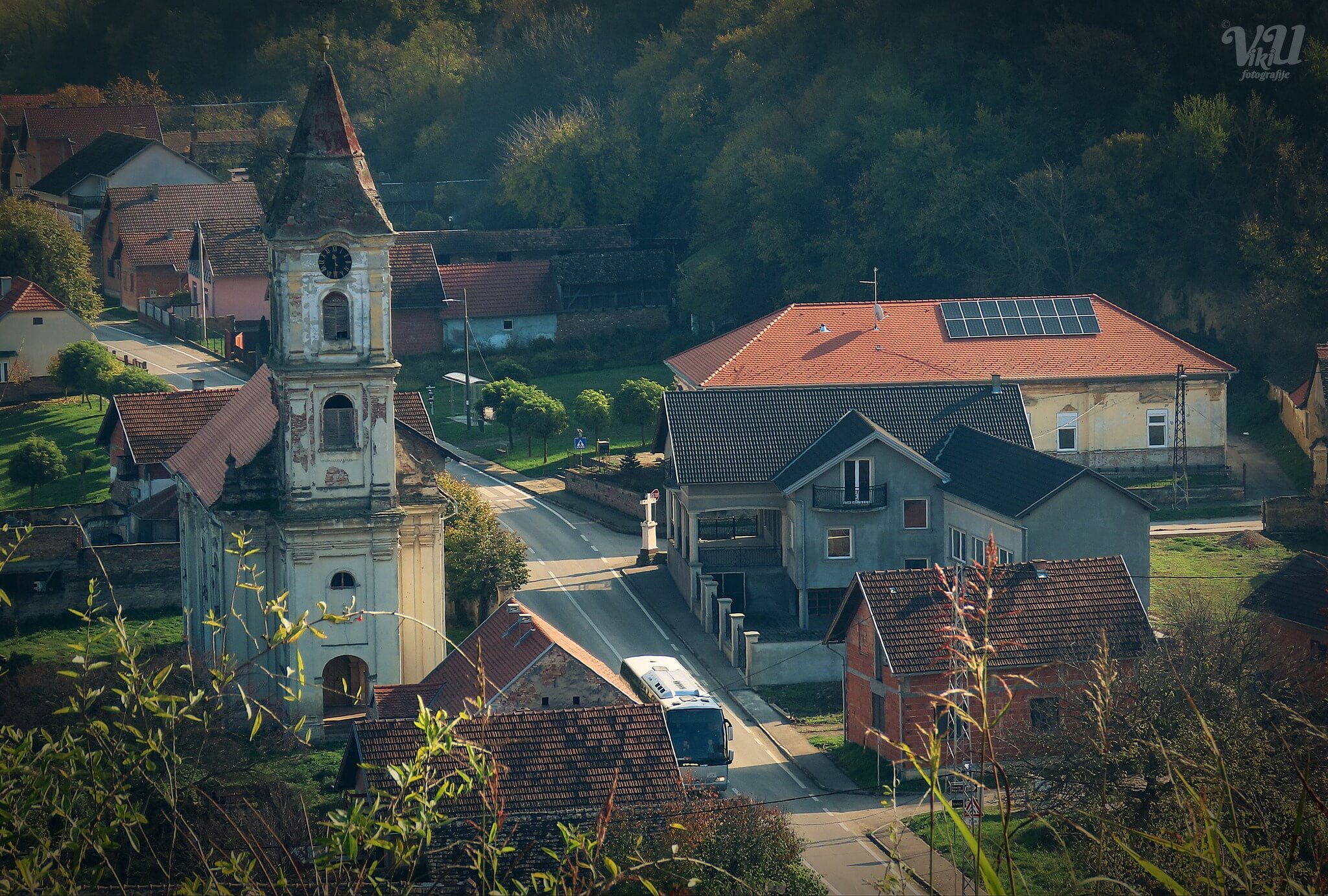
Violeta Kovačević - Viki Vu Fotografije
Discover the Croatian Danube with us and check out Aljmaš part 1 and part 2, Erdut, Dalj and Milutin Milankovic, and Vukovar. Stay tuned for the finale of the series – Ilok.
How good is your knowledge of eastern Croatia? Take the CROMADS test above - how many places do you recognise?
For more, make sure to check out our dedicated Travel section.
Discover the Croatian Danube: One With the River, Vukovar
October 12, 2022 – We have written about Vukovar before. You might know a little about how its history affects those who live there, what they do, or what happens in the city year-round. You might even be planning your weekend there. Maybe you’ll let the place change you like it changed Paul. In any case, when you do go, make sure you stop and honour its Danube.
This city and the river are one. The Danube is why people settled in the Vukovar area, Vučedol, as early as around 3000 BC. The Vučedol culture revolved around the riches provided by the river – fishing was, of course, a big part of their daily lives, and the kind of soil on which the settlements were built was especially fruitful thanks to its proximity to the river. The Vučedol settlement was only a couple of hundred metres away from the riverbank. If you visit the museum built on the actual site, you will surely see what it means to be so close to the Danube and to be close with the Danube.
Steve Tsentserensky
The Vučedol Culture Museum is the perfect place to start your Vukovar Danube tour. It was opened in 2015 and received an award for its architecture in 2016. It is among the few museums built on the actual site of the single culture it represents. If you would like to learn a little about how people lived in the area five thousand years ago and why they were just as cool and important as Egyptians, treat yourself to a visit to the museum. As a reward, you will enjoy some exceptional rooftop views at the end of your tour.
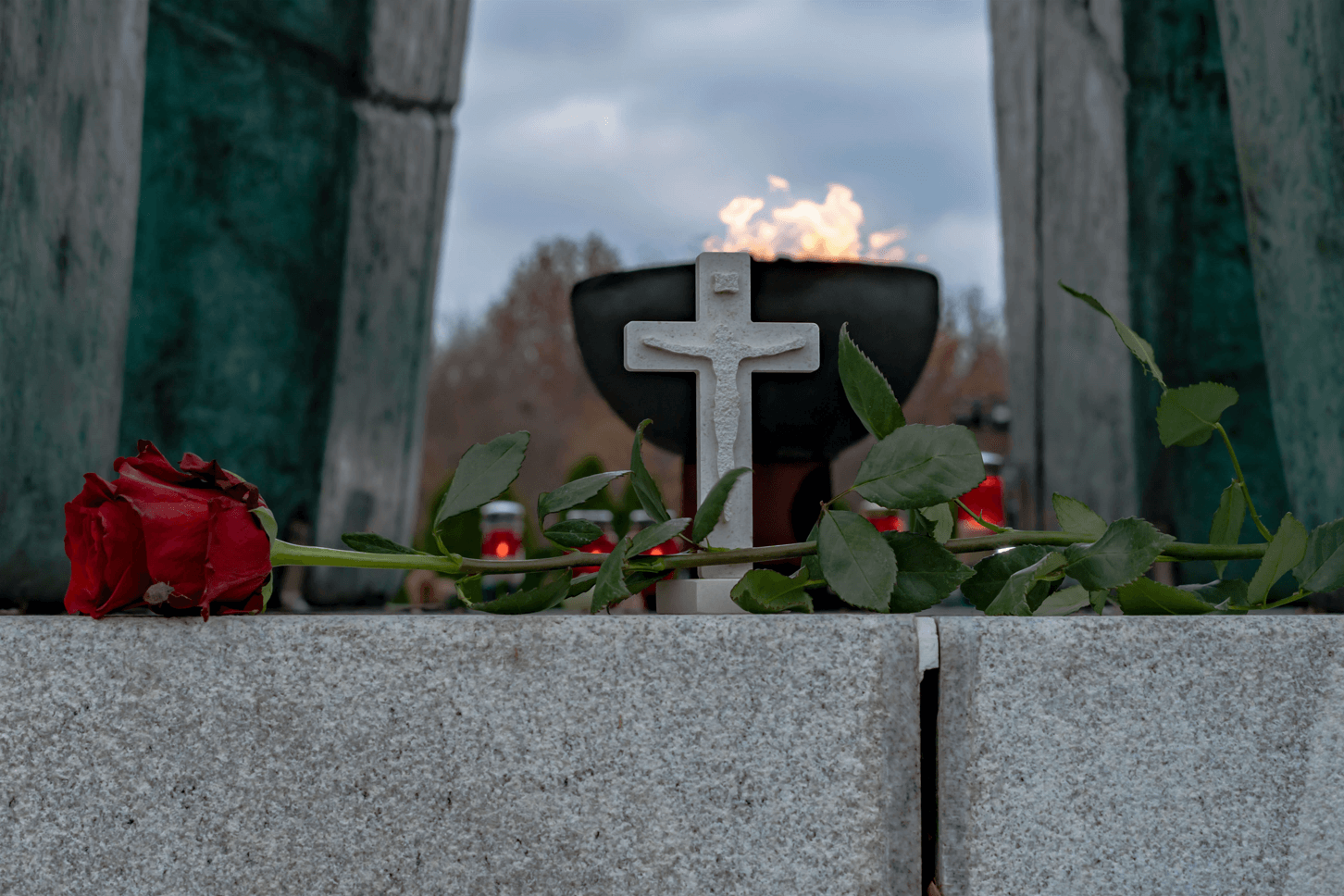
Steve Tsentserensky
If you were to follow the Danube from Vučedol towards the city centre, it would ensure the perfect itinerary. Firstly, you could stop by the Memorial Cemetery and light a candle for those who have given their lives for the Homeland. During autumn, just taking a walk there will be peaceful and serene, and on the way out, you can buy a little bag of roasted chestnuts to warm your soul. The next logical stop would be the Watertower. You can take the 198 stairs to its top or the panoramic lift. Either way, the journey will make you truly understand the sacrifice of Vukovar’s heroes, and the Danube will again display its grandness.

Vukovar Tourist Board
From there on, you can take the side streets and visit the Franciscan monastery and church on the hill or follow the main road to arrive directly at the baroque streets. These were initially built during the 17th and 18th centuries and were preserved and rebuilt time and time again, keeping their recognisable decorative look. This is the heart of Vukovar. You will find the shops of many of its small businesses and entrepreneurs nestled right under the famous arches. Take a right, and you will find your way to the riverbank yet again. Follow the newly built promenade, which will take you past the shopping street, the Municipal museum with its lovely open backyard, and finally, to the recreation part, where you’ll often find locals walking, cycling, skating, or catching some sun rays. You can even engage in our favourite pastime and sit down for a cup of coffee or two, followed by a beer or two, while overlooking the Vukovar Ada, making sure the Danube flows in the correct direction.
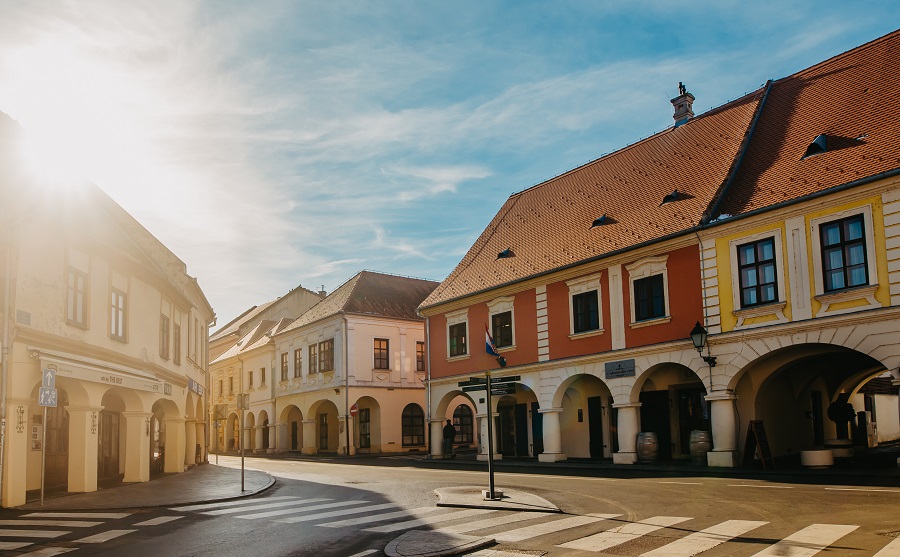
Vukovar Tourist Board / Marko Balaži
And just like the baroque street is the heart of the city, Ada is the heart of Vukovar’s Danube. In Croatian, the word ada means river island. And that’s what it is. And so much more. It’s a place of gathering, relaxation, recreation, pure fun, and joy. It’s Vukovar’s home in the summer. It’s the unique spot from which you can observe the silhouette of the city, almost feeling like the city is watching over you. If you enjoy camping, this is where you want to be. Perfectly calm during nighttime, full of life during the day. In Vukovar, there are two types of people – those who have their boats and those who take other boats to reach Ada. Usually starting in June until late August, boats will go up and down the river all day to take everyone to the island and back, and they will do it free of charge. In the middle of the island, facilities are set up so you can enjoy a quick bite or a refreshing drink between swims, naps, or rounds of beach volleyball.

Vukovar Tourist Board
Finally, if you would like a taste of the river along with a little glimpse into the culture, we recommend that you visit Vukovar either in June during the Danube Fest or in September for its Autumn Festival. On both occasions, you will have a chance to experience local tradition and way of life and taste some of the best products brought by the river and the soil of Vukovar, made possible by the crafty and hard-working hands of its experienced and knowledgeable home and fair, sometimes competition, chefs.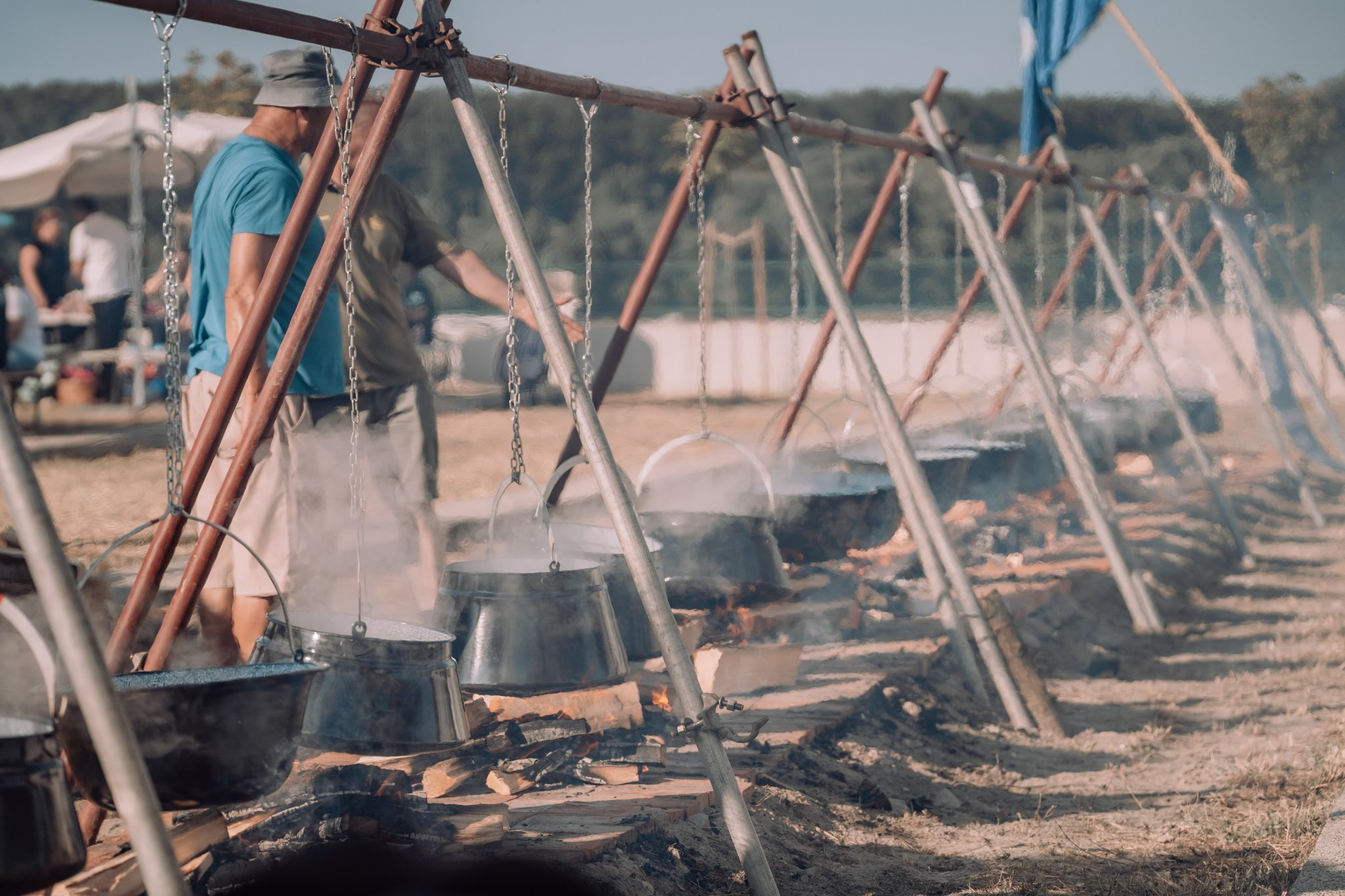
Vukovar Tourist Board / Vedran Barić
We could continue telling you of the riches the Danube provides for Vukovar, but we will leave some to your imagination and discovery. If you happen to visit this December, stay tuned for the dates of TCN’s presentation of a very special little something that we’ll call the Vukovar Card.
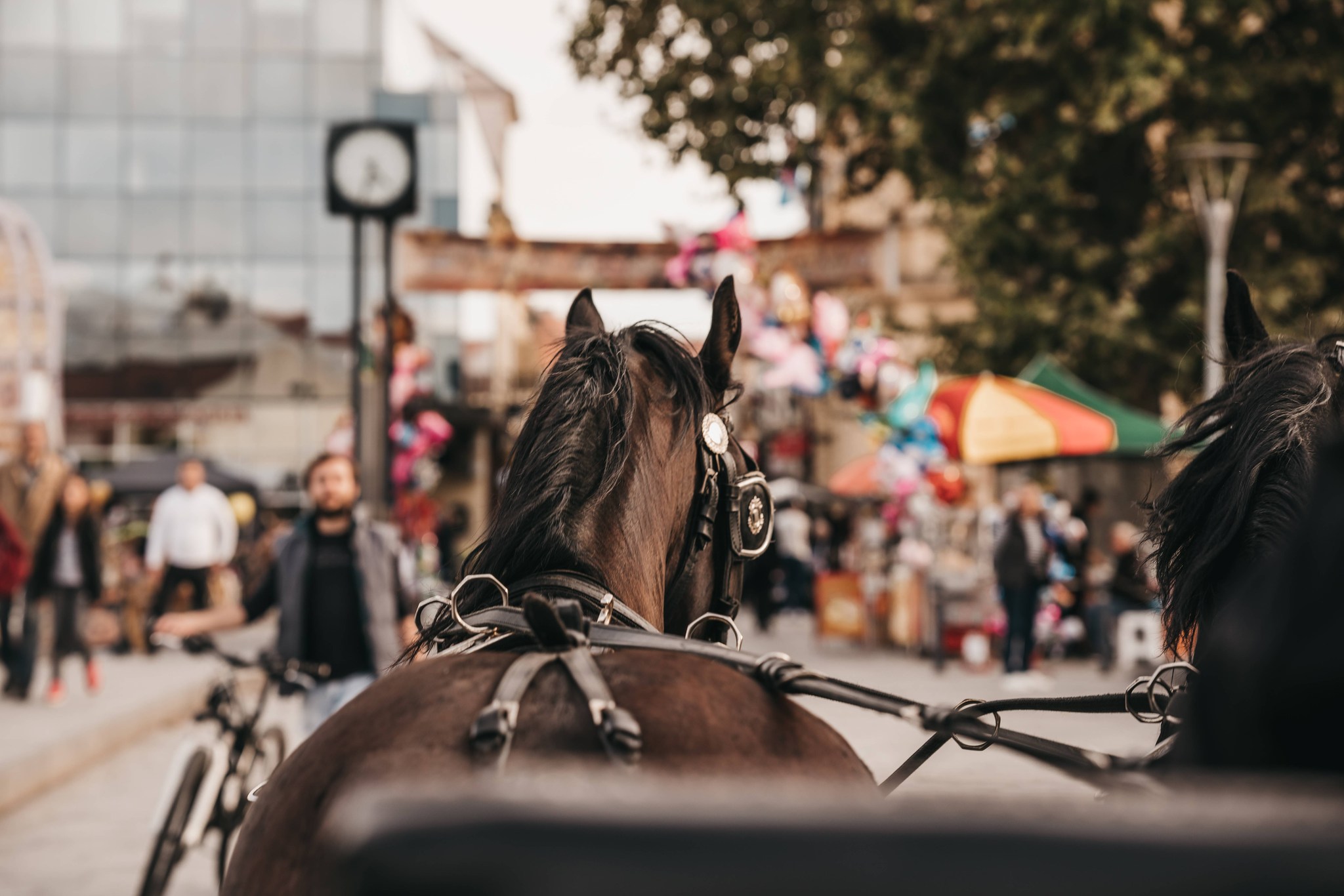
Vukovar Tourist Board / Marko Balaži
If you are only tuning in now, check out the previous editions of the Croatian Danube series - Aljmaš parts I and II, Erdut, and Dalj.
How good is your knowledge of eastern Croatia? Take the CROMADS test above - how many places do you recognise?
For more, make sure to check out our dedicated Travel section.
Discover the Croatian Danube: An Idyllic Weekend in Dalj
September 30, 2022 - From the canals of Aljmaš; and the slopes of Erdut, after having enjoyed steaming hot fish stew from a hanging pot and wine from the largest barrel in the world, continue your journey east, and you will shortly arrive in Dalj. Another hidden gem of Slavonia and Croatia. A place where the Danube is just the right temperature in the summer, where the fruits taste sweet, and where the stars aligned to make it the birthplace of one of the greats.
The first signs of life in Dalj date back to the Bronze Age, around 1350 BC. One of its first names, from the Roman times, was Teutoburgium, and its significance was that it was positioned on one of the four main routes towards Dalmatia. Just like the rest of eastern Croatia, Dalj underwent changes in power and demography, resulting in a rich heritage mix of Catholic, Orthodox Christian, and Ottoman influences. The Christian religions remained and are both still an essential part of Dalj’s culture. The silhouette of the village is adorned with Catholic and Orthodox churches, and the church of St. Demetrius is the largest cathedral of the Serbian Orthodox Church in Croatia. Right next to it, an inviting palace with a garden full of flowers – the summer residence of the church’s patriarchs found its home. Naturally, its location is prime, with only a green park between it and the Danube.

Author
The Danube, of course, is what life revolves around. The geography of the village has remained such that people from every part of the village can reach the riverbank quickly and straightforwardly. They go there to walk, relax, swim, fish, or enjoy nature. In the summer, the Dalj beach is the absolute centre of all activity. Gathering from all parts of the village, families, and friends either walk, swim, or let the Danube take their boats there. Once they’ve reached the sand and the shade of the banks, the party can start. Whether beach volleyball, music, drinks, or barbecue, something happens daily to keep everybody’s minds off the summer heat.
Just like Aljmaš and Erdut, Dalj is an excellent stop on the Danube not only for refreshment and activities but for wine and food. The local gastronomy shines bright in Stari Mlin, a restaurant serving the best of Slavonia daily, with live music on weekends, occasional events, and special celebrations. It is a trendy venue for team buildings as well. There is plenty of room both indoors and on their summer terrace.

Restoran Stari Mlin
The menu celebrates the Danube, with carp, catfish, and perch taking centre stage and plenty of meat dishes in supporting roles. We recommend calling in advance to try out their famous traditional catfish stew or fire-roasted carp. Even if you’re not feeling hungry, sit down for dessert or coffee and enjoy the view and the Danube breeze.

Steve Tsentserensky
After a delicious filling meal, it would be a mistake not to let your heart take you straight to wine. A special surprise awaits in Dalj. Head over to the Antunović winery, the first female-owned and established Croatian winery, and find out why it became one of the most awarded wineries in Croatia.
If you’re looking for a specific reason to visit Dalj, where you can experience the lovely autumn atmosphere while learning about the local traditions, try the Fair of Old Crafts and Customs and Gužvara Fest. Use the chance to try out traditional tools and witness true craftsmanship or taste some of the local delicacies. The emphasis lies on Gužvara – a traditional yeast dough dessert filled with ground walnuts or poppy seeds. It is a must-serve at Slavonian feasts and gatherings. Saturday, the 8th of October, is the day.
Tradition is an integral part of life in Croatian villages. Following suit, the big days in Dalj include kirbaj (also known as kirvaj), Crkveni God for the Catholic population, and Krsna Slava for Orthodox families. Both events celebrate the village's and family patron saints, respectively.
Finally, let us not forget to mention Dalj's greatest - Milutin Milanković. This mind of the future, an influential mathematician, physicist, and astronomer, was born in Dalj, went on to travel Europe for his studies and work, but came to some of his most important conclusions right in his backyard, inspired by the Danube and a big pine tree, which still stands there 143 years later. Stay tuned to find out more about, possibly, Croatia's most underrated museum.

Steve Tsentserensky
Special thanks to Jovana, the Erdut Municipality Tourist Board directorErdut Municipality Tourist Board, and the perfect host for our day in Dalj.
How good is your knowledge of eastern Croatia? Take the CROMADS test above - how many places do you recognise?
For more, make sure to check out our dedicated Travel section.
Discover the Croatian Danube: Fishing Village of Aljmaš (Part 1)
August 15, 2022 – The blue, the mighty, the grand, the Danube. One of the most important rivers in the world that was the lifeline of an entire civilisation in Vučedol remains an aspect of life without which life would be unimaginable everywhere along its course. The German, the Austrian, and the Hungarian Danube are well known. It is time to discover the Croatian Danube. From Osijek to Ilok, its course is adorned with picturesque little villages. In part one of the series, welcome to Aljmaš.
Located some twenty-six kilometres east of Osijek and the same distance north of Vukovar, between the slopes of Alma Mons, or Fruška Gora, and the bank of the Danube, this small fishing village patiently awaits the arrival of all who seek peace and quiet. Four streets, a thousand or so houses, one big church, some 350 people. Is that all there is? Of course not. Hundreds of years of history, legends, traditions, and the best fish stew you would ever hope to try. An easy, quiet lifestyle with all that you might need. Even business opportunities.

Photo: Dubravka Petric (PIXSELL)
It has been 785 years since the first mention of the name Aljmaš. The area itself, though, has hosted life since long before, and the locals keep finding remains of Roman architecture to this day. With its geographical position in proximity to the river, the settlement surely played an important role in the Roman empire. A theory excitedly discussed among the locals is that a yet-to-be-located battle between the Romans and the Illyrians might have happened in the valley of Aljmaš itself.
The historical importance of the village also lies in the fact that the well-known Hungarian humanist and poet Janus Panonnius was born in none other than Aljmaš. Though Čazma was previously believed to be his birthplace, his verses confirm that it was indeed “Where the Drava surrounds its name and water to the Danube”. And during the Austro-Hungarian rule, it was the beloved summer garden of Maria Theresa.
As for other popular sources of debate, there is an interesting theory that explores the possibility that Novi Sad in Serbia was built by settlers from Aljmaš, somewhat resembling the New Amsterdam story. In the early 18th century, when the plague was the main threat in Europe, a group of people from Aljmaš apparently sailed out on a raft down the Danube to escape the disease. They might have settled some 130 km east, around the area of today’s Novi Sad. To confirm this theory, the locals point out that the streets of Aljmaš were called sadovi, which is an old Slavic word for garden, and the name Novi Sad, you guessed it, means a new garden. Secondly, Novi Sad, the city is only about three hundred years old, which would correspond to the time of movement.
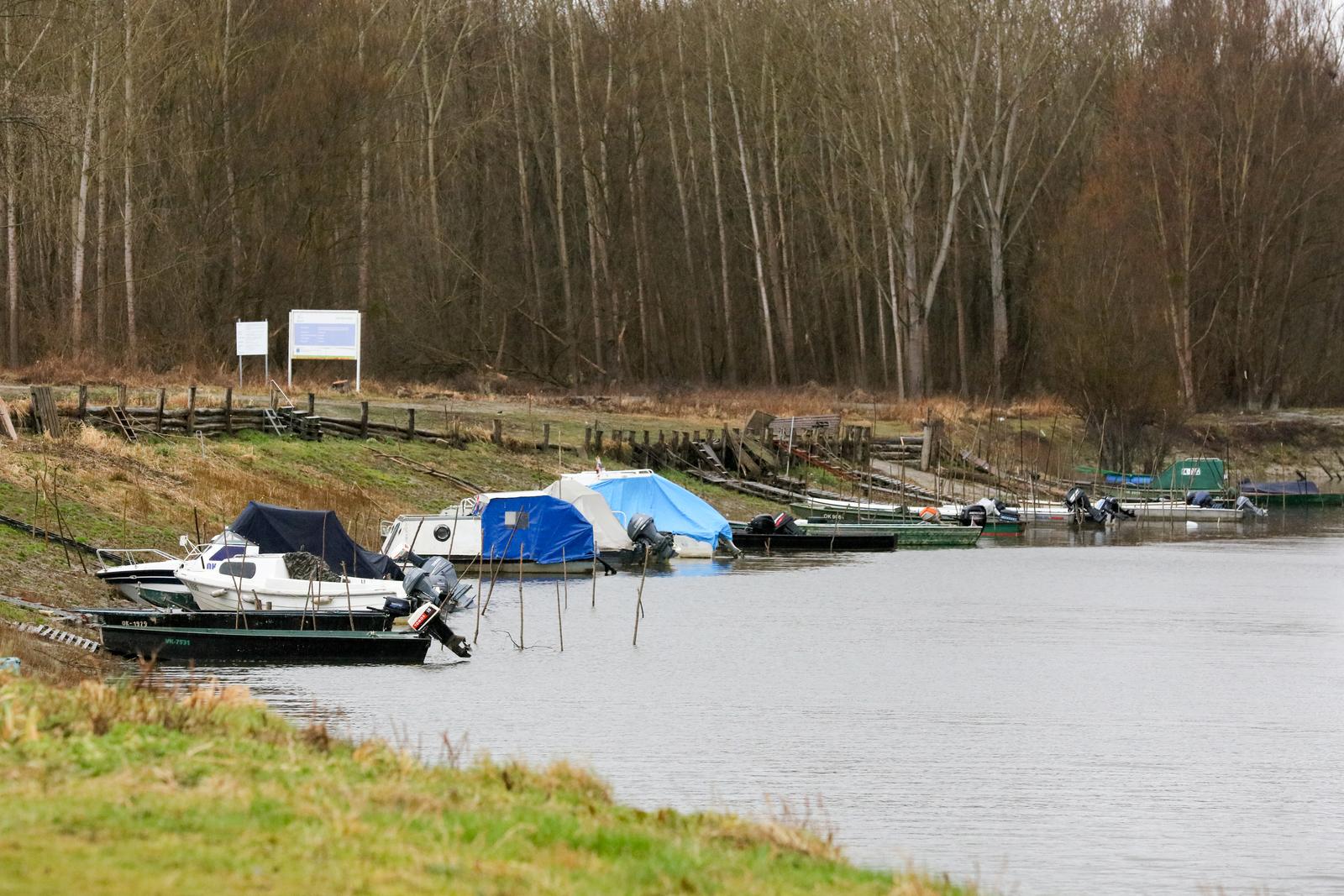
Photo: Dubravka Petric (PIXSELL)
Modern Aljmaš lived its golden age between the two world wars, when 1446 people lived there, who owned 46 businesses, and the village had 2 butchers and 3 bakeries. It was an important port on the way from the Black Sea to Budapest, which, as you can imagine, ensured that the birth rate would steadily grow. It was also an important weekend and summer home for the nobles of Osijek and Vukovar who needed a quiet place in nature, especially those who liked fishing. After the second world war, as well as the Homeland war, the population of Aljmaš unfortunately significantly declined, leaving it at approximately a quarter of what it used to be.
It is, however, slowly being rediscovered. Trying to escape a busy hectic lifestyle, many will naturally gravitate towards picturesque little places like this to spend their holidays, weekends, or retirement, but people have also started permanently moving there to live a relaxed life and raise their children in a safe environment where nature still dictates the way of life.
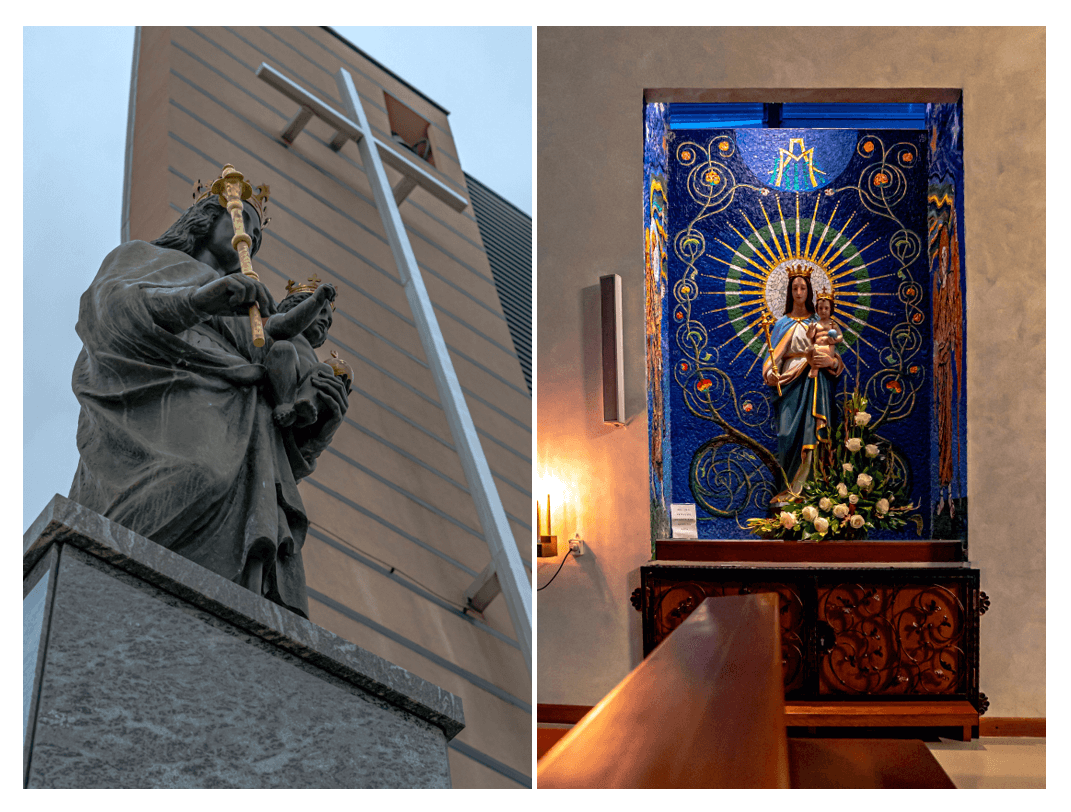
Photos: Steve Tsentserensky
Catholicism has always played a very important role here, so much so that even during the Ottoman rule when many were forced to convert to Islam, Aljmaš remained a Catholic settlement. Nowadays, it is one of the famous places of worship and pilgrimage in the name of Mary. Even though a legend does exist of a sighting of the Virgin Mary, the reason why Aljmaš became her home is different. In 1704, a statue of Mary was brought from the village of Lug in Baranja to save it from the rebellion that was brewing there against the Habsburg monarchy. A humble little church made of branches and mud stood in Aljmaš to provide shelter. Mary has been the symbol of Aljmaš ever since. In 1846 the village church burnt down, along with the statue, only leaving a painting of the former statue. A new baroque church was built, and the bishop Josip Juraj Strossmayer financed a new statue to be made in Vienna. During the Homeland war in 1991, the said church was heavily bombarded and taken down, and the statue was believed to be destroyed. In 1992, however, a Russian UN soldier found the statue with only the crown and a part of one arm missing, dressed it in his vest, and put a helmet on it to conceal it and safely transport it to Osijek. Just like the people of Aljmaš, it spent years in exile. It remained in Osijek until 1998 when it was taken back to Aljmaš. The road, of course, was the Danube. It was taken on a boat, with hundreds of fishing boats following.
Photo: Steve Tsentserensky
With the old church destroyed and the statue of Mary having been returned to Aljmaš, the local government decided to invest in a new place for worship and built the new, monumental church in 2003. It is famous for its architecture, but this does spark debate among the locals. While some think that its modern design draws people in, others disagree since its architectural integrity might not be the best, and it is questionable how long the church will withstand the humidity and the winds from the Danube.
One thing is for sure, though. The church is still an important place not only for the residents of Aljmaš but for many who visit to pray and contemplate. Without a doubt, the most important date remains today, August 15, marking the Assumption of Mary. Year after year, the holy mass in the open gathers thousands of pilgrims. Though it is a quiet celebration, the village comes alive in its former glory with people walking, talking, praying, and the children all gathering around the little stalls for ice cream, cotton candy, or plastic toys.
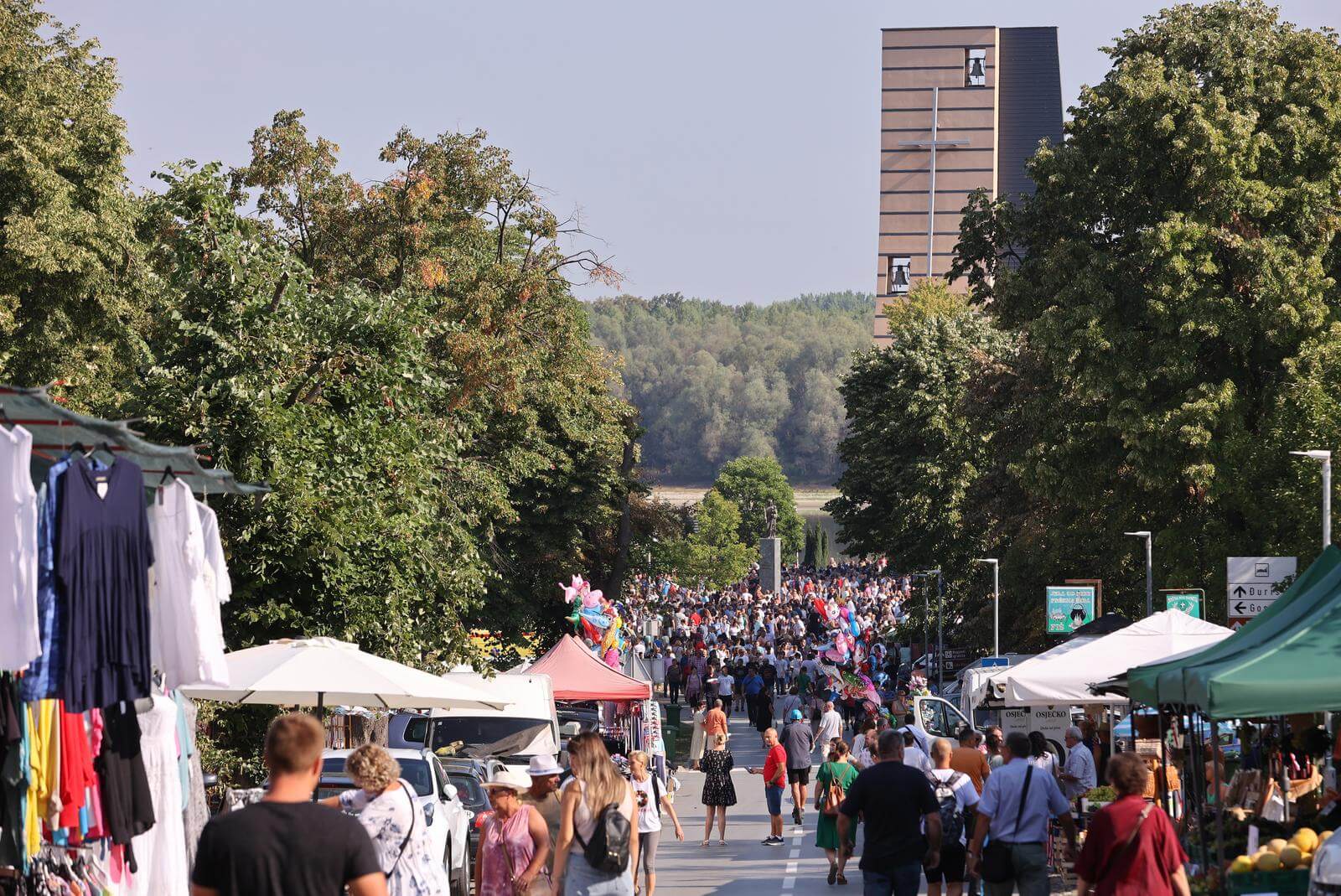
Photo: Davor Javorovic (PIXSELL)
Even though August 15 remains the most important day for Aljmaš, it is not the only day when something happens. The locals gathered in cultural societies make sure that the traditions keep on living, and that daily life is still eventful. To find out more about the local customs and traditions which live on, how the village Google makes sure they know it all, why foreigners keep buying houses there, and when you should make sure you visit, stay tuned for part 2 next week on TCN.
Special thanks to Marina, a tourist guide from Aljmaš, who works hard to keep tradition alive and who happily shared her stories with TCN.
How good is your knowledge of eastern Croatia? Take the CROMADS test above - how many places do you recognise?
For more, make sure to check out our dedicated Lifestyle section.


